
MAGNETIC RESONANCE MATERIALS IN PHYSICS BIOLOGY AND MEDICINE
Scope & Guideline
Elevating Research in Magnetic Resonance Technologies
Introduction
Aims and Scopes
- Quantitative MRI Techniques:
The journal emphasizes the development and application of quantitative MRI methods that provide accurate measurements of various physiological and pathological parameters, including tissue composition and perfusion. - Advanced Imaging Methodologies:
Research published often explores and develops advanced imaging techniques, such as diffusion-weighted imaging, functional MRI, and magnetic resonance spectroscopy, to improve diagnostic accuracy. - Artificial Intelligence in MRI:
A significant focus is on the integration of artificial intelligence and machine learning techniques for image reconstruction, segmentation, and analysis, enhancing the efficiency and reliability of MRI interpretations. - Clinical Applications of MRI:
The journal highlights studies that translate MRI technologies into clinical practice, addressing unmet clinical needs and improving patient outcomes through innovative imaging solutions. - Technical Innovations and Hardware Development:
Research often involves the design and optimization of MRI hardware and techniques, including coil design, shimming methods, and low-field MRI systems, which enhance imaging capabilities.
Trending and Emerging
- Deep Learning and AI Applications:
There is a marked increase in research leveraging deep learning and AI for various MRI applications, including image reconstruction, artifact reduction, and automated segmentation, which significantly enhance the efficiency and accuracy of MRI diagnostics. - Quantitative Imaging and Biomarkers:
An emerging focus on quantitative imaging techniques to derive biomarkers for diseases, particularly in oncology and neurology, highlights the journal's commitment to advancing personalized medicine through precise imaging. - Motion Correction Techniques:
Research targeting motion correction methods has gained traction, reflecting the need for reliable imaging in patients who cannot remain still, thereby improving the quality of functional and anatomical imaging. - Theranostics in MRI:
The integration of theranostic approaches, where diagnostic imaging is combined with therapeutic strategies, is becoming a prominent theme, showcasing the evolving role of MRI in both diagnostics and treatment. - Virtual and Augmented Reality in MRI:
Emerging studies exploring the use of virtual and augmented reality technologies for MRI visualization and education are gaining interest, suggesting a shift towards interactive and immersive approaches in medical imaging.
Declining or Waning
- Traditional Contrast Agents:
Research focusing on traditional gadolinium-based contrast agents has decreased as new methods, including non-contrast imaging techniques and advanced quantification methods, gain popularity due to safety concerns and the push for more efficient imaging protocols. - Low-Field MRI Limitations:
Studies concentrating solely on the limitations of low-field MRI systems have diminished, as advancements in low-field technologies and hybrid imaging modalities are becoming more prevalent. - Basic MRI Physics:
There has been a notable reduction in the publication of papers focusing solely on fundamental MRI physics without direct clinical or technological application, as the community shifts towards more application-oriented research.
Similar Journals

Oral Surgery Oral Medicine Oral Pathology Oral Radiology
Transforming Oral Care Through Comprehensive ResearchOral Surgery Oral Medicine Oral Pathology Oral Radiology, published by Elsevier Science Inc., is a prestigious journal dedicated to advancing the fields of dentistry, oral surgery, pathology, and radiology. With an impressive impact factor positioning it in the Q2 category across multiple disciplines, including Dentistry, Oral Surgery, and Pathology, this journal is an essential resource for researchers and professionals seeking cutting-edge insights and evidence-based practices. The journal is renowned for its rigorous peer-review process, ensuring that only the highest quality research is disseminated to its audience. Although currently not adopting an Open Access model, it continues to attract a broad readership through its commitment to scholarly excellence, having ranked in the top percentiles in various scientific categories as per Scopus. The journal plays a crucial role in bridging the gap between scientific research and clinical practice, providing vital information that supports improving patient care in oral health. As it converges years of insightful published research from 2012 to 2024, this journal remains a vital resource for students, practitioners, and researchers dedicated to advancing the science and practice of oral health.
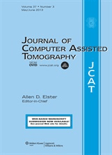
JOURNAL OF COMPUTER ASSISTED TOMOGRAPHY
Bridging Theory and Practice in RadiologyJOURNAL OF COMPUTER ASSISTED TOMOGRAPHY, published by Lippincott Williams & Wilkins, stands as a vital resource in the field of Radiology, Nuclear Medicine, and Imaging. Since its inception in 1977, this journal has been dedicated to advancing the understanding and application of computer-assisted tomography, emphasizing innovative research and clinical practices that enhance diagnostic imaging techniques. With an impact factor reflective of its rigorous scholarship and relevance—ranking in the Q3 category—the journal serves as an essential platform for contributors and readers alike, navigating the challenges and opportunities within a rapidly evolving field. Researchers, professionals, and students are encouraged to engage with the rich repository of articles that cover emerging technologies, clinical applications, and theoretical advancements, collectively fostering a deeper comprehension of imaging sciences. Although not currently designated as an open-access journal, it continues to enhance discourse in the community from its headquarters in Philadelphia, PA, maintaining a commitment to the highest standards of academic excellence.

MAGNETIC RESONANCE IMAGING
Exploring Breakthroughs in Radiology and BiophysicsMAGNETIC RESONANCE IMAGING, published by Elsevier Science Inc, stands at the forefront of research in the fields of Biomedical Engineering, Biophysics, and Radiology, Nuclear Medicine and Imaging. Since its inception in 1982, the journal has become a vital resource, currently enjoying a Q2 ranking in its respective categories as of 2023, underscoring its influence and significance within the scientific community. With an ISSN of 0730-725X and an E-ISSN of 1873-5894, it provides an essential platform for disseminating groundbreaking studies and advancements in magnetic resonance imaging technology and applications. Researchers, professionals, and students benefit from its comprehensive articles that address both theoretical advancements and practical implementation in clinical settings. The journal's commitment to advancing knowledge is reflected in its recognition in Scopus Rankings, where it lies in the 67th percentile for Radiology, Nuclear Medicine and Imaging. By fostering an environment of critical dialogue and innovation, MAGNETIC RESONANCE IMAGING remains a cornerstone publication for those dedicated to pioneering the future of imaging science.

Magnetic Resonance Imaging Clinics of North America
Pioneering advancements in magnetic resonance imaging.Magnetic Resonance Imaging Clinics of North America, published by W B Saunders Co-Elsevier Inc, serves as a vital resource in the field of radiology, nuclear medicine, and imaging. With a Q2 ranking in the 2023 category quartiles, it reflects its significance and contribution to advancing the understanding and applications of magnetic resonance imaging. Established in 1993, this journal has continuously provided insightful reviews and clinical techniques that bridge the gap between theoretical research and practical application, making it essential for both seasoned practitioners and emerging professionals. Although it does not offer open access, the journal boasts a robust readership due to its high-impact research articles and comprehensive reviews, facilitating the ongoing education and development of its audience. Operating out of Philadelphia, PA, this journal aims to enhance clinical practices and patient care through disseminating cutting-edge knowledge in MRI.
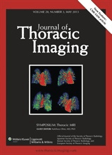
JOURNAL OF THORACIC IMAGING
Transforming Thoracic Medicine through Research ExcellenceThe JOURNAL OF THORACIC IMAGING, published by Lippincott Williams & Wilkins, stands as a pivotal resource in the fields of Pulmonary and Respiratory Medicine as well as Radiology, Nuclear Medicine, and Imaging. With the ISSN 0883-5993 and E-ISSN 1536-0237, this esteemed journal has been providing critical insights and advancements since its inception in 1985, contributing significantly to the ongoing dialogue and research within these disciplines. The journal maintains a commendable position, ranking in the Q2 category in both relevant fields and achieving an impressive Scopus ranking of #46 out of 333 in Radiology and #30 out of 155 in Pulmonary Medicine, showcasing its influence and impact (with particles in the 86th and 80th percentiles, respectively). While the journal is not open access, it continues to disseminate high-quality research that informs clinical best practices and emerging technologies in thoracic imaging. As a leading publication, it serves as an essential tool for researchers, clinicians, and students seeking to stay at the forefront of thoracic health innovations.
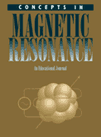
CONCEPTS IN MAGNETIC RESONANCE PART A
Fostering Global Collaboration in Magnetic ResonanceCONCEPTS IN MAGNETIC RESONANCE PART A, an esteemed journal published by Wiley-Hindawi, stands as a pivotal platform in the field of spectroscopy since its inception in 2002. With an Open Access model implemented in 2019, this journal allows for the broad dissemination of research findings, fostering collaboration and innovation among researchers, professionals, and students globally. While it currently holds a quartile ranking of Q4 in Spectroscopy, it aspires to provide a comprehensive collection of original research and review articles that address significant advancements and methodologies in magnetic resonance. Its unique focus invites contributions that enhance understanding and application of imaging techniques, thereby playing a vital role in bridging theoretical concepts to practical applications in chemistry. Boasting an ISSN of 1546-6086 and an E-ISSN of 1552-5023, it continues to encourage the exchange of ideas and data among the scientific community within the United States and beyond, based in the historic Adam House in London.

Forensic Imaging
Exploring the intersection of pathology, medicine, and imaging.Forensic Imaging is a premier international journal dedicated to advancing the field of forensic science through the analysis and implementation of imaging techniques. Published by ELSEVIER, this open access journal provides a platform for researchers, professionals, and students to disseminate innovative studies that bridge the disciplines of Pathology, Forensic Medicine, and Radiology. Since its inception in 2020, it has gained recognition and holds a respectable Q3 ranking in its categories for both Pathology and Forensic Medicine and Radiology, Nuclear Medicine and Imaging, reflecting its commitment to high-quality, impactful research. The journal's practical focus on imaging methodologies offers valuable insights into forensic investigations and enhances professional practices, making it an essential read for those involved in forensic research and application. Available in both print and online formats, Forensic Imaging serves as a vital resource for fostering breakthroughs in the analysis of forensic evidence.

Oral Radiology
Empowering clinicians with the latest in oral imaging technology.Oral Radiology is a prestigious academic journal published by Springer, dedicated to advancing the field of dentistry and radiology through high-quality research and innovative findings. With a focus on oral imaging, it has established itself as a vital resource for researchers, clinicians, and students alike, striving to bridge the gap between cutting-edge imaging technologies and practical applications in oral health. Covering a diverse range of topics from 1985 to 2024, this journal not only holds a commendable Q2 ranking in both the Dentistry (miscellaneous) and Radiology, Nuclear Medicine and Imaging categories but also ranks impressively within the Scopus metrics, placing it among the top-tier publications in its field. While not an open-access journal, Oral Radiology remains a crucial platform for disseminating significant advances, influencing both academic research and clinical practices. Its rigorous peer-review process ensures that only the highest quality articles are published, making it an essential read for those seeking to stay at the forefront of oral radiological science.
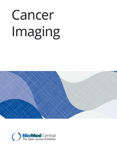
CANCER IMAGING
Illuminating Innovations in Oncology ImagingCANCER IMAGING, published by BMC, stands as a leading open-access journal in the realms of oncology and medical imaging, significantly contributing to the advancement of cancer research since its inception in 2000. With an impressive impact across multiple domains—most notably ranking Q1 in prestigious categories such as Medicine (miscellaneous), Oncology, and Radiology—this journal ensures high visibility and influence within the academic community. As of 2023, it is recognized in various Scopus rankings, securing top positions in the fields of Radiology, Nuclear Medicine, and Imaging, alongside Radiological and Ultrasound Technology. The journal's commitment to open-access publication, adopted in 2014, enhances accessibility for researchers, healthcare professionals, and students alike, fostering an inclusive environment for sharing critical advancements and innovative methodologies in cancer imaging. Set in the vibrant landscape of the United Kingdom, CANCER IMAGING continues to play a vital role in elucidating the complexities of cancer diagnostics and treatment, establishing itself as an essential resource for those pursuing excellence in cancer care and research.
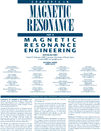
CONCEPTS IN MAGNETIC RESONANCE PART B-MAGNETIC RESONANCE ENGINEERING
Fostering Collaboration in the Evolving Field of Magnetic Resonance.CONCEPTS IN MAGNETIC RESONANCE PART B-MAGNETIC RESONANCE ENGINEERING is a premier journal published by WILEY-HINDAWI, dedicated to advancing the field of magnetic resonance engineering. With an ISSN of 1552-5031 and E-ISSN 1552-504X, this journal offers an Open Access platform since 2022, ensuring that research is freely accessible to scholars worldwide. Covering a broad spectrum of applications in medicine, radiology, nuclear medicine, and imaging, it serves as a key resource for professionals looking to stay updated with the latest advancements and innovations in the field. The journal enjoys notable rankings in various categories, including a rank of #137 in Medicine and #26 in Health Professions within Scopus, reflecting its importance and influence in both academic and clinical settings. As a vital conduit for cutting-edge research, CONCEPTS IN MAGNETIC RESONANCE PART B is committed to fostering the growth of knowledge while addressing the critical challenges and technological enhancements within magnetic resonance methodologies. Researchers, professionals, and students can expect to find comprehensive articles that adhere to high scientific standards, promoting discourse and collaboration across disciplines.